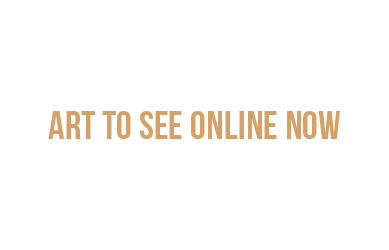by Alison Hugill // Mar. 7, 2025
This article is part of our feature topic Public.
At some point or another, an exhibition text is likely to refer to the public—the audience, the visitor, the viewer. This amorphous category is given a lot of weight and critical responsibility, but what does it really entail? How can we make sense of this assemblage and does it always stand in opposition to, for example, the private or the individual?
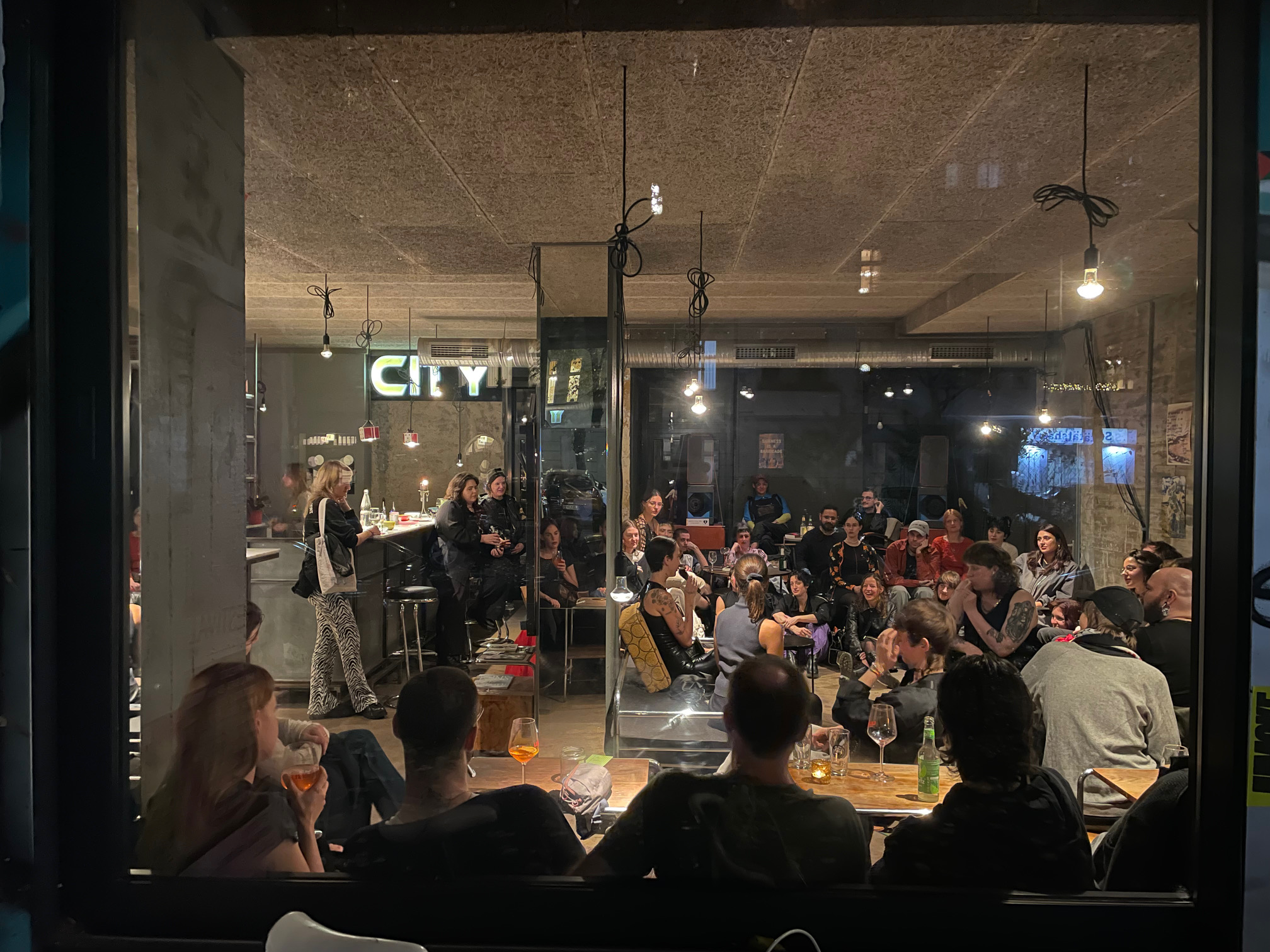
Angel B. H.’s ‘All Hookers Go to Heaven’ book launch event and discussion on sex worker’s rights // Photo by Dylan Spencer-Davidson
In socially-engaged art and spatial practices, the public is synonymous with an idea of “community,” a social body that is often the target of the artist or collective’s participatory aims. In her book ‘Community as Urban Practice,’ sociologist Talja Blokland notes that the term “community” is widely used because “it has the convenience of being imprecise and loaded with positive connotations, a social ‘something’ that we cannot be against.” She argues that community is not something inherent to a group, but is always imagined and enacted symbolically, as a kind of public performance. Her theory of community as an “urban practice” echoes the way in which the public, in contemporary art, is invented anew each time an artwork takes place—its role is ill-defined and malleable according to different settings, and yet it is always invoked as a stable and unified category.
With this topic, we consider art practices that speak to “the public,” either as the container for their ideas of community or from a more critical angle, bringing into play pressing issues like mutual aid and surveillance, as well as the ways in which our bodies are governed by social constraints in public space.
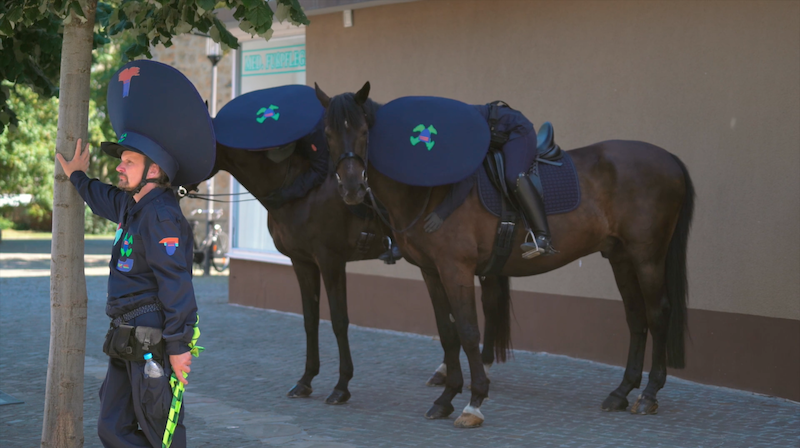
Flo Kasearu: ‘Disorder Patrol,’ 2021, video still, 13mins // Courtesy of the artist
Contributor Adela Lovric recently visited the studio and “house museum” of Estonian artist Flo Kasearu in Tallinn, where she regularly gives tours of her home, in which she works and lives, alongside other tenants. Red ropes act as partitions between public and private spaces, and the artist considers these boundaries in her practice as well. In her upcoming show at Kai Art Center in Tallinn, Kasearu explores the dynamics of public and private space from the NIMBY (Not In My Backyard) perspective, which considers development as negative or harmful regardless of whether this perception is justified. Spanning over 50 newly commissioned and recent works—including installations, paintings, video, photography and sculpture—the show builds a total environment and invites the audience to engage in discussions about urban and rural development, public participation, local values and property rights.
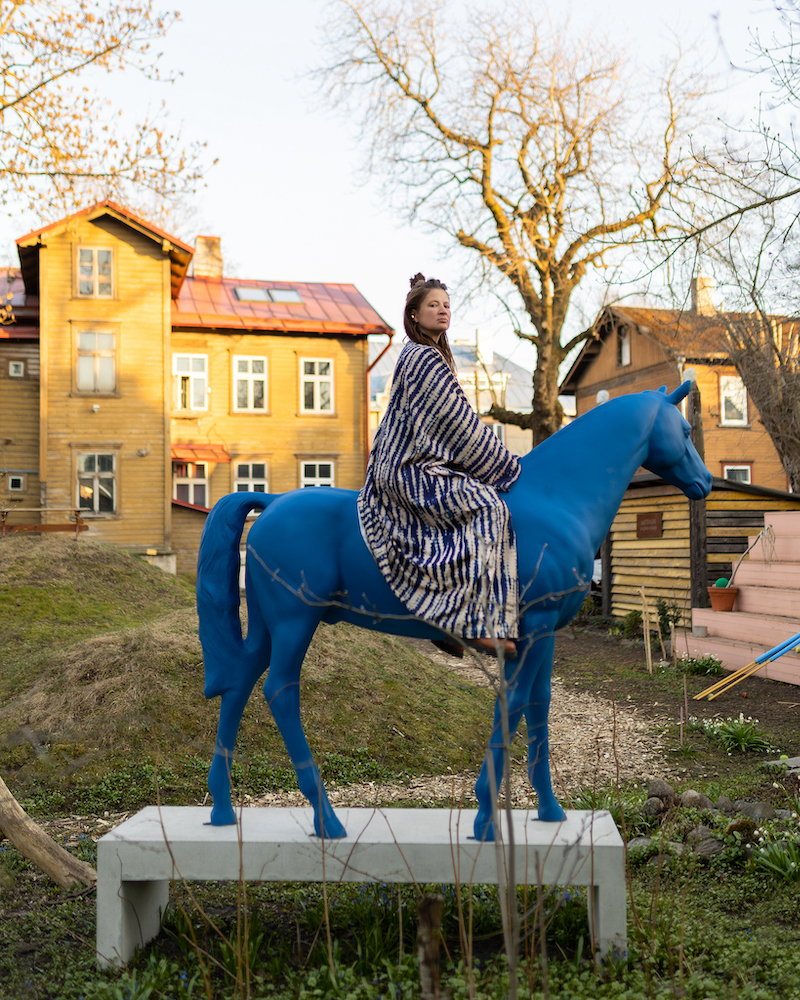
Flo Kasearu // Photo by Kroot Tarkmeel
For another contribution to the topic, Diane Barbé will interview the artists and cultural workers behind Neukölln’s recently opened Casino for Social Medicine. The Casino is a collectively-run space on Sonnenallee: “part simple coffee house, part clinic for collectivist experiences, part mutual aid gamble, the Casino wants to be a space where organizing and aesthetic experiences meet.” Initiated by artist Cassie Thornton and curator Magdalena Jadwiga Härtelova, among others, the Casino takes their book ‘The Hologram’ into public practice, envisioning peer-to-peer and feminist health care inspired by the solidarity health care clinics in Greece. With this emphasis on “social medicine,” the space has a diverse public program that invites a variety of people to offer their skills and strategies in the name of peer education.
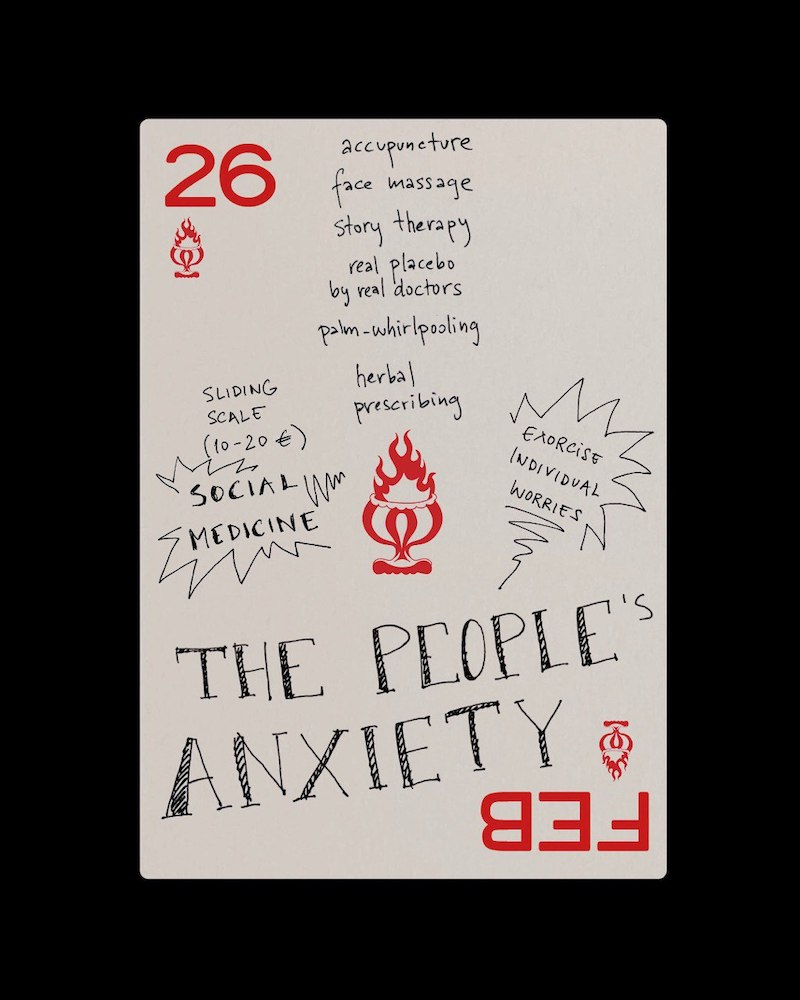
Casino event flyer // Courtesy of Dylan Spencer-Davidson
London-based artist and writer Samra Mayanja will speak with William Kherbek about her performances and poetic monologues that use dark comedy and absurdism to uncover her greatest skill: “the ability to create a space that upturns the norms that encourage us to hide.” Mayanja runs The Call Centre, a monthly performance program dedicated to the unspeakable. Contributor Nadia Egan will speak with DANCÆ—a Berlin-based network of artists dedicated to producing and curating collaborations between contemporary art forms and dance. Their latest work, ‘Körperfabrik,’ presents three new choreographic works performed by dancers of the Deutsche Oper Berlin. Set in Kantgaragen—a former parking structure designed to regulate movement—the piece mirrors how bodies are governed by societal constraints, highlighting “moments of liberation, resilience and the potential to transcend systemic pressures.”
Bringing something into the open is often regarded as a good thing, but there are also strict social codes that dictate what can and cannot be done in public space. With this topic, we ask: how does art interact with those spaces and what expectations are put on the “community” that makes up its audience?









